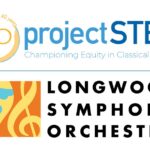
[PODCAST] A Review of Cause Camp 2023
November 15, 2023
Project STEP and Longwood Symphony Orchestra: Impact Through Harmony
November 29, 2023Jim Eskin's Guide to Donor Engagement Using Virtual Meetings

Jim Eskin’s Guide to Donor Engagement Using Virtual Meetings aims to help you navigate new ways to stay relevant in today’s technological landscape.
Town hall meetings, also referred to as town halls or town hall forums, have a deep and rich history that predates the founding of our nation. It epitomizes the spirit of community. In today’s techno-nomenclature, it was the precursor to the Chat Room.
Traditionally, they have been effective ways for elected officials to meet with their constituents either to hear from them on topics of interest or to discuss specific upcoming legislation or regulation.
With the wide scale acceptance of video-conferencing, huge doors of opportunity have opened up for non-profits of all sizes and representing all different sectors to enhance what they should be doing as much as possible — and that is engaging their donor prospects and friends in spirited discussions of how best to move their missions forward.
Of course, it is always better to meet in person. But the pandemic keenly reminded us that video-conferencing is becoming an increasingly attractive alternative. Three magic words: They save time! Attendees can participate from any location with their choice of smart devices.
Structuring virtual hall meetings requires more attention to detail relating to myriad issues including the most prudent use of technology, agenda planning and adherence, and most importantly, effective ways for attendees to be seen, heard and interact. My preference is to highlight opportunities for the attendees to speak freely and be heard rather than passively receive reports from leadership. In fact, I like embracing Laura Fredricks’ criteria for a successful meeting in which donor prospects speak 75% of the time and non-profit leadership the other 25%.
Results from early applications have been productive and encouraging. Just in the same fashion that we have made steady and significant improvements in each one of 110 interactive webinars held for our learning community of professional and volunteer non-profit leaders, we look forward to learning timely lessons from each and every program.
Strictly as a starting point, here are 12 guidelines to provide a constructive framework for achieving an open, respectful dialogue with maximum participation that culminates in forward thinking.
- The overarching goal is to tap the wisdom of the whole.
- Be conscientious in the selection of a facilitator who is firmly committed to neutrally guiding the discussion and not trying to influence outcomes with personal opinions.
- Every voice is to be valued. That means everyone needs to participate to the fullest of his/her ability, freely expressing ideas, questions and concerns. I prefer going around the virtual table and asking everyone to share their opinions (they can choose to pass), instead of asking for a show of hands which typically results in the same voices being heard over and over again.
- Only one person speaks at a time. Respect others when they are talking. Listen actively and probe for meaning. The goal is not necessarily to agree on everything, but to keep an open mind and gain a deeper understanding of other participants.
- Respect the agenda. Keep to the specified topics, and budgeted time frames. It takes the consensus of the group to deviate from the agenda.
- Disagree without being disagreeable. It’s fine to respectfully challenge one another by asking questions, but there is no place for personal attacks. The focus is on ideas.
- Be conscious of body language and non-verbal responses — they can be as disrespectful as words. Yes, these are easily visible on computer screens.
- It’s better if participants speak from their own experience instead of generalizing.
- When the discussion veers off agenda or gets bogged down, a “parking lot” is used to defer those subjects for more information or study and/or discussion at a later time.
- Be clear on desired outcomes. If you don’t know where you are going, how will you know when you have arrived? It’s critical that the group know exactly what outcomes it wants from the meeting.
- At the end of each section, the facilitator recaps main points and conclusions. A scribe must be designated to take notes that are swiftly shared (within 24 to 48 hours) of the meeting to demonstrate how important the dialogue is to non-profit leaders.
- It’s not just okay to have fun. If everyone enjoys participating, the group will be much more productive.
Like everything else in the life of a non-profit, virtual hall meetings are works in progress. Over time people will become more and more comfortable with them, and productivity will increase. We look forward to both reporting on results being achieved, and hearing your feedback, ideas and suggestions on continuous process improvement.
Jim Eskin’s consulting practice, Eskin Fundraising Training builds on the success of his more than 200 fundraising workshops and webinars and provides the training, coaching and support services that non-profits need to compete for and secure major gifts. He has authored more than 100 guest columns that have appeared in daily newspapers, business journals and blogs across the country, and publishes Stratagems, a monthly e-newsletter exploring timely issues and trends in philanthropy. Sign up here for a free subscription. He is author of 10 Simple Fundraising Lessons, which can be purchased here.
Jim Eskin’s Guide to Donor Engagement Using Virtual Meetings was first posted at NANOE News
For more articles like Jim Eskin’s Guide to Donor Engagement Using Virtual Meetings VISIT HERE
Jim Eskin
Founder
Eskin Fundraising Training
10410 Pelican Oak Drive
San Antonio, TX 78254-6727
Cell: 210.415.3748
E-Mail: [email protected]
www.eskinfundraisingtraining.com
The post Jim Eskin’s Guide to Donor Engagement Using Virtual Meetings appeared first on NANOE | Charity’s Official Website.
